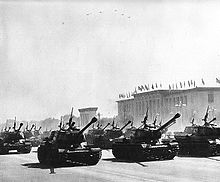- Copy to clipboard
- Moderator
- #1
- Messages
- 111,139
- Reaction score
- 834
- Origin

- Residence

Gunship Helicopter ....
Follow along with the video below to see how to install our site as a web app on your home screen.

Note: this_feature_currently_requires_accessing_site_using_safari












| Title | 上将 Shang jiang | 中将 Zhong jiang | 少将 Shao jiang | 大校 Da xiao | 上校 Shang xiao | 中校 Zhong xiao | 少校 Shao xiao | 上尉 Shang wei | 中尉 Zhong wei | 少尉 Shao wei | 学员 Xue yuan |
|---|---|---|---|---|---|---|---|---|---|---|---|
| Equivalent translation | General | Lieutenant general | Major general | Senior colonel | Colonel | Lieutenant colonel | Major | Captain | First lieutenant | Second lieutenant | Officer cadet |
| Shoulder insignia |  |  |  |  |  |  |  |  |  |  |  |


| Title | 上将 Shang jiang | 中将 Zhong jiang | 少将 Shao jiang | 大校 Da xiao | 上校 Shang xiao | 中校 Zhong xiao | 少校 Shao xiao | 上尉 Shang wei | 中尉 Zhong wei | 少尉 Shao wei | 学员 Xue yuan |
|---|---|---|---|---|---|---|---|---|---|---|---|
| Equivalent translation | General | Lieutenant general | Major general | Senior colonel | Colonel | Lieutenant colonel | Major | Captain | First lieutenant | Second lieutenant | Officer cadet |
| Collar insignia |  |  |  |  |  |  |  |  |  |  |  |


| Rank group | 高级军士 Gao ji jun shi | 中级军士 Zhong ji jun shi | 初级军士 Chu ji jun shi | 义务兵 Yi wu bing | |||||
|---|---|---|---|---|---|---|---|---|---|
| Title | 一级军士长 Yi ji jun shi zhang | 二级军士长 Er ji jun shi zhang | 三级军士长 San ji jun shi zhang | 一级上士 Yi ji shang shi | 上士 Shang shi | 中士 Zhong shi | 下士 Xia shi | 上等兵 Shang deng bing | 列兵 Lie bing |
| Equivalent translation | Master sergeant first class | Master sergeant second class | Master sergeant third class | Staff sergeant first class | Staff sergeant | Sergeant | Corporal | Private first class | Private |
| Collar insignia |  |  |  |  |  |  |  |  |  |


| Rank group | 高级军士 Gao ji jun shi | 中级军士 Zhong ji jun shi | 初级军士 Chu ji jun shi | 义务兵 Yi wu bing | |||||
|---|---|---|---|---|---|---|---|---|---|
| Title | 一级军士长 Yi ji jun shi zhang | 二级军士长 Er ji jun shi zhang | 三级军士长 San ji jun shi zhang | 一级上士 Yi ji shang shi | 上士 Shang shi | 中士 Zhong shi | 下士 Xia shi | 上等兵 Shang deng bing | 列兵 Lie bing |
| Equivalent translation | Master sergeant first class | Master sergeant second class | Master sergeant third class | Staff sergeant first class | Staff sergeant | Sergeant | Corporal | Private first class | Private |
| Shoulder insignia |  |  |  |  |  |  |  |  |  |






| Type | Active |
|---|---|
| Main battle tanks | 4,800 |
| Light tanks | 1,250 |
| Assault guns | 1,200 |
| Infantry fighting vehicles | 7,700 |
| Armored personnel carriers | 3,950 |
| Amphibious armored vehicles | 750 |
| Anti-tank missile carriers | 1,125 |
| Tank destroyers | 480 |
| Towed anti-tank guns | 1,308 |
| Self-propelled artillery | 3,180 |
| Towed artillery | 900 |
| Self-propelled gun-mortars | 1,250 |
| Multiple rocket launchers | 1,320+ |
| Surface-to-air missile systems | 754+ |
| Self-propelled anti-aircraft guns | 396 |
| Towed anti-aircraft guns | 7,000+ |
| Attack helicopters | 320+ |
| Multi-role helicopters | 208 |
| Transport helicopters | 452 |






Loading...